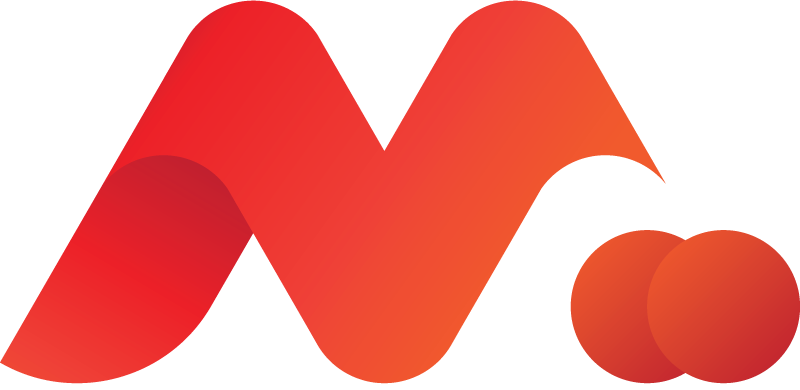Here’s what you should know:
- Taking a new product to market can be likened to building a fire. Initially, it requires a lot of attention and careful additions of fuel (customers) until it’s self-sustaining.
- Start small, test your product with 10-15 potential ideal customers. Their feedback helps you refine the product. When they become paying customers, it’s time to scale up.
- The next 100 customers are your kindling. Automate the process using CRM and start demand generation. Use testimonials from your first 15 customers as part of your content marketing.
- The final stage is fuel – large accounts that are already identified but left aside while the smaller accounts were secured. These require more effort to close but can significantly increase the revenue.
- The founder should start hiring a sales team only when they’re too busy with sales that they can’t focus on anything else.
While no metaphor is perfect, it’s helpful to think about taking a new product to market in the same fashion as building a fire. At the beginning, it’s very hands-on, and you need to be careful about what you are adding and when. Once the fire is going, you tend to it in a different way, adding larger sticks, and then logs, in stages until you have something roaring. The goal is to build a fire that requires less of your attention over time (because you will have help with marketing, sales, customer success, and user engagement, etc.) but at the beginning, it’s all on you.
Just as with building a fire, you want to have all of your fuel gathered before you light the tinder. This means you identify your first 15 customers (tinder), your next 100 customers (kindling), and then your marquee customers (fuel) before you pull the trigger on starting your sales. If you are doing it right, your fire should grow so quickly that you don’t have time to stop to gather wood.
Every potential customer goes into your CRM, from customer 1 to customer 1,000. The first 15 should be entered manually, the rest (give or take a handful) can be uploaded in bulk from a targeted list that you have created or purchased. The more detailed your notes (quality of wood) for each customer, the better your chances of landing future customers. When it comes to sales, data is your friend.
Step One: Getting it Going
When you start a fire, you begin with small pieces of tinder, maybe 10-15 individual twigs, that you carefully arrange in your fire pit. You apply a lighter or a match, and you make sure those initial pieces get going by hovering over that singular flame and paying close attention to what is happening.
When you take your product to market, you want to do so in the smallest, most confined environment that makes sense for your offering. When Amazon started, Bezos knew he wanted to be the “everything store,” but he couldn’t start with everything. He started with books because he knew he could nail that particular niche. What offering can you nail?
At Mark II, we start with a refined idea and then find those 10-15 customers that we hypothesize are the ideal customers (the people who will love this product). We then go talk to those customers, not as a sales call, but as a learning experience (i.e. customer discovery).
Those 15 customers are the tinder for the fire. We’re seeing if we can get a small flame to take hold with the tinder, and we know it might not. If the tinder doesn’t ignite, then we know we’re not going to be able to get a bigger fire going, and we go back to the drawing board.
In that process, we’re literally co-developing the product with those 10-15 alpha customers. We’re getting them to tell us that they like our idea and then test out our prototypes and a beta version of the product. Ultimately, our goal is for those 10-15 to turn into paying customers. That’s when the tinder has caught fire and we can start adding some twigs. But early on, we’re not trying to get anything other than those first 10-15 to convert (to catch fire). Once they do, then it’s time to start building our fire. We need larger pieces of wood.
Step Two: Kindling
Continuing the metaphor, your next 100 customers represent the kindling. Unless you are in a city with a number of people who are experiencing pain that you can cure, it will be difficult to visit enough prospects to get to 100 paying customers. You need to begin automating your process using your CRM, and you need to start some demand generation. Demand gen are the activities that are going to encourage people to come to you rather than you reaching out to them. I realize that sticks don’t walk toward fires, but imagine a camping future where they did!
Take a look at your first 15 customers and determine the top 3. You will use surveys to do this later, but for now, you should have a firm understanding of how each of your first users are interacting and engaging with your product. You need to get testimonial videos from these folks, either through recording them over their computer’s camera or filming them in person. Mark II has a video contractor that we pay for this, but you can do it yourself using software like vocal video.
If you use the right tinder, you will get testimonials, and those testimonials are the best way to get your kindling going. These testimonials should become the focus of your content marketing: blogs, white papers, and case studies.
Continue to pay attention to what is going on inside the fire pit, focusing on user engagement and experience from beginning to end. Get yourself a great fire-poking stick for this (think customer success) and there are a number of software options out there to help with user engagement and churn prevention. After all, you don’t want your fire going out after you’ve started it, and if your users aren’t engaged, it’s going out. Should your product be so amazing that users are drawn to it like moths to light? Yeah, but that’s rarely the case in the early days, even for companies that seem to have exploded onto the scene.
Based on the feedback from your first 50-100 users (the first 10 will tell you if you’ve screwed up the tinder) it may be that you need to move a few things around as you notice issues with onboarding or core functionality. It’s good to reach out to your Dev Team here to have them address early bugs before investing time and money on fuel. See Building Success Into A Product from our CTO for more details on that.
Step Three: Fuel
For purposes of this metaphor, I’m thinking about fuel as logs that are 10X the size of my kindling. Translated to SaaS sales, your average deal size maybe $1,000 in MRR, and those deals reflect the first 15 accounts you closed. As you begin to successfully close 100 of your standard-sized deals, it’s time to switch some of your focus onto larger accounts, which, recall from the opener, you’ve already identified. You’ve just left them off to the side while getting your fire ready for them.
Like a log that needs time and heat to catch on fire, larger accounts take longer to close, and they generally won’t close without a good bit of poking, prodding, and general rearranging. The topic of closing enterprise sales accounts warrants several blog posts (books) on its own, but I think two key points are important for this metaphor. The first is an awkward acronym, and the second is a word or two on hiring your sales team.
The acronym: MEDDPICC
If you haven’t seen that before, there are multiple resources online to help you understand it better. It stands for:
M: Metrics
E: Economic Buyer
D: Decision Criteria
D: Decision Process
P: Paper Process
I: Implicate the Pain
C: Champion
C: Competition
While not in order, those are the comprehensive criteria for closing large accounts. You may be thinking, “Wow, that’s a lot for one person to consider for one account.” And if you are a founder CEO, and you already have 100 smaller accounts that you also need to attend to, then you’d be right. That’s why you may need to begin hiring a team before you start going after those logs.
When I think about adding fuel to a fire, I think about getting a larger, warmer fire without as much hands-on activity from me. Importantly, that doesn’t simply mean throwing fuel on, it means carefully growing your sales team. Don’t grow your team too soon. Without mixing metaphors here, the biggest mistake I’ve made in my professional career was hiring people for my sales team before my sales team needed people. That wasn’t sheer laziness. It was blind ambition and lack of experience. Simply told, I hired more sales reps before there was lead flow to justify hiring them.
Metaphorically speaking, I did not have enough activity in my fire to throw on fuel. This begs the question, “How do you know when you are ready to grow your team?” Don’t throw fuel on the fire until you have no other choice. You as a founder CEO should be so busy with sales that you don’t have time for anything else. For example, you can’t build your customer support team because you are too busy updating your CRM, and your dev team has priorities that you can’t pay attention to because your calendar is full of customer meetings. When you find yourself putting off meetings with customers because you have too many meetings with customers, it’s time to bring on your first sales team hire. I will cover that entire process with another metaphor. Running a zoo maybe.
Step Four: Enjoy
If you’ve followed the steps correctly, you are going to have a minute to sit down and enjoy the fire. You’ve earned it. Despite the rotten wood, rain, and the board members questioning your fire-tending skills, you’ve built something worthwhile. I’d encourage you not to take your eye off of it, as a founder CEO you are always 100% responsible for growth. That said, life is short, and if you can’t stop for the occasional smores, or a bourbon by a campfire, then you are doing it wrong.
Conclusion
In conclusion, successful product marketing is a gradual process similar to building a fire. It starts with a small, attentive approach, testing and refining the product with initial customers. As positive feedback and engagement grow, so does the customer base, leading to larger accounts. Automation, content marketing, and user engagement are key components in this process. Eventually, a sales team may be needed when the founder is overwhelmed with sales tasks. Ultimately, the goal is to create a self-sustaining product, but the founder CEO’s responsibility for growth never ceases.








